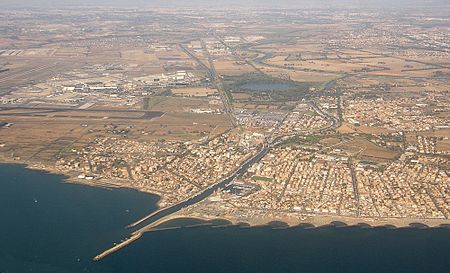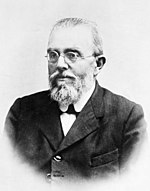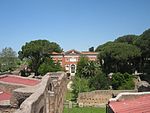Portus
1st-century establishments in ItalyAncient ports and harboursArchaeological sites in LazioFiumicinoFormer populated places in Italy ... and 3 more
Roman harborsRoman harbors in ItalyRoman sites in Lazio

Portus was a large artificial harbour of Ancient Rome. Sited on the north bank of the north mouth of the Tiber, on the Tyrrhenian coast, it was established by Claudius and enlarged by Trajan to supplement the nearby port of Ostia.The archaeological remains of the harbour are near the modern-day Italian village of Porto within the Comune of Fiumicino, just south of Rome in Lazio (ancient Latium).
Excerpt from the Wikipedia article Portus (License: CC BY-SA 3.0, Authors, Images).Portus
Via Portuense,
Geographical coordinates (GPS) Address Phone number Website Nearby Places Show on map
Geographical coordinates (GPS)
| Latitude | Longitude |
|---|---|
| N 41.779 ° | E 12.259 ° |
Address
Area Archeologica del Porto di Traiano
Via Portuense
00054
Lazio, Italy
Open on Google Maps









